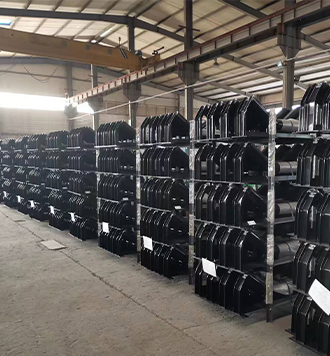 Afrikaans
Afrikaans  Albanian
Albanian  Amharic
Amharic  Arabic
Arabic  Armenian
Armenian  Azerbaijani
Azerbaijani  Basque
Basque  Belarusian
Belarusian  Bengali
Bengali  Bosnian
Bosnian  Bulgarian
Bulgarian  Catalan
Catalan  Cebuano
Cebuano  Corsican
Corsican  Croatian
Croatian  Czech
Czech  Danish
Danish  Dutch
Dutch  English
English  Esperanto
Esperanto  Estonian
Estonian  Finnish
Finnish  French
French  Frisian
Frisian  Galician
Galician  Georgian
Georgian  German
German  Greek
Greek  Gujarati
Gujarati  Haitian Creole
Haitian Creole  hausa
hausa  hawaiian
hawaiian  Hebrew
Hebrew  Hindi
Hindi  Miao
Miao  Hungarian
Hungarian  Icelandic
Icelandic  igbo
igbo  Indonesian
Indonesian  irish
irish  Italian
Italian  Japanese
Japanese  Javanese
Javanese  Kannada
Kannada  kazakh
kazakh  Khmer
Khmer  Rwandese
Rwandese  Korean
Korean  Kurdish
Kurdish  Kyrgyz
Kyrgyz  Lao
Lao  Latin
Latin  Latvian
Latvian  Lithuanian
Lithuanian  Luxembourgish
Luxembourgish  Macedonian
Macedonian  Malgashi
Malgashi  Malay
Malay  Malayalam
Malayalam  Maltese
Maltese  Maori
Maori  Marathi
Marathi  Mongolian
Mongolian  Myanmar
Myanmar  Nepali
Nepali  Norwegian
Norwegian  Norwegian
Norwegian  Occitan
Occitan  Pashto
Pashto  Persian
Persian  Polish
Polish  Portuguese
Portuguese  Punjabi
Punjabi  Romanian
Romanian  Russian
Russian  Samoan
Samoan  Scottish Gaelic
Scottish Gaelic  Serbian
Serbian  Sesotho
Sesotho  Shona
Shona  Sindhi
Sindhi  Sinhala
Sinhala  Slovak
Slovak  Slovenian
Slovenian  Somali
Somali  Spanish
Spanish  Sundanese
Sundanese  Swahili
Swahili  Swedish
Swedish  Tagalog
Tagalog  Tajik
Tajik  Tamil
Tamil  Tatar
Tatar  Telugu
Telugu  Thai
Thai  Turkish
Turkish  Turkmen
Turkmen  Ukrainian
Ukrainian  Urdu
Urdu  Uighur
Uighur  Uzbek
Uzbek  Vietnamese
Vietnamese  Welsh
Welsh  Bantu
Bantu  Yiddish
Yiddish  Yoruba
Yoruba  Zulu
Zulu Essential Components of Conveyor Systems for Efficient Material Handling
Understanding Conveyor System Parts
Conveyor systems are integral to many industries, facilitating the efficient movement of materials and products through various processes. These systems come in a variety of designs, each tailored to specific application needs. Understanding the parts that make up conveyor systems is essential for optimizing performance, minimizing downtime, and ensuring safety during operation. This article will provide an overview of the key components of conveyor systems and their functions.
1. Belt
The belt is one of the most recognizable and essential components of many conveyor systems. It serves as the surface that carries the product from one point to another. Belts come in various materials, including rubber, PVC, and metal, depending on the weight and type of materials being transported. For instance, a rubber belt is suitable for handling packages, while metal belts are used in high-temperature applications. The belt's design—whether flat, modular, or cleated—will also affect its ability to handle certain types of products.
2. Rollers
Rollers support the conveyor belt and are crucial for its movement. They are usually made from metal or plastic and come in different diameters and lengths to accommodate varying belt sizes. There are different types of rollers, including drive rollers, which propel the belt forward, and return rollers, which guide the belt back to the starting point. Properly aligned and functional rollers reduce friction and enhance the overall efficiency of the conveyor system.
3. Drive Motor
The drive motor is the powerhouse of the conveyor system, providing the necessary energy to move the belt. The choice of motor is vital, with options ranging from electric to hydraulic systems. The drive motor's capacity must match the weight and speed of the materials being transported. Additionally, regular maintenance of the motor is crucial to prevent breakdowns and prolong the lifespan of the conveyor system.
4. Support Structure
conveyor system parts

The support structure is the framework that holds the conveyor system in place. This can be made from various materials, including steel and aluminum, depending on the system’s load requirements. The support structure must be designed to withstand the weight of the conveyor system itself, as well as any materials it carries. Proper installation and periodic inspections are necessary to ensure structural integrity and safety during operation.
5. Idlers
Idlers are components that keep the belt in alignment and support the belt's weight. They play an important role in reducing belt sag and maintaining proper tension throughout the system. Like rollers, idlers can also be designed to accommodate various materials and operational requirements. Regular checks of idlers are essential to prevent belt misalignment and excessive wear.
6. Controls and Sensors
Modern conveyor systems often incorporate sophisticated controls and sensors to enhance operational efficiency. These controls can include variable frequency drives (VFDs) that adjust the belt speed according to the flow of materials, as well as sensors that monitor the system's performance. Such technologies help in achieving precise control, thereby minimizing energy costs and maximizing productivity.
7. Safety Features
Safety is paramount in any industrial operation, and conveyor systems are no exception. Safety features can include emergency stop buttons, guards to prevent accidental contact with moving parts, and warning lights that signal when the system is in operation. Regular safety audits and training for personnel are essential to ensure compliance with safety regulations and to mitigate potential hazards.
Conclusion
Conveyor systems are complex machines composed of various interdependent parts, each playing a crucial role in the system's functionality. Understanding these parts, from the belt and rollers to the drive motor and safety features, allows businesses to make informed decisions regarding maintenance, upgrades, and overall system efficiency. Proper care and attention to conveyor system parts not only extend the equipment's lifespan but also enhance productivity and safety in industrial operations.
-
Revolutionizing Conveyor Reliability with Advanced Rubber Lagging PulleysNewsJul.22,2025
-
Powering Precision and Durability with Expert Manufacturers of Conveyor ComponentsNewsJul.22,2025
-
Optimizing Conveyor Systems with Advanced Conveyor AccessoriesNewsJul.22,2025
-
Maximize Conveyor Efficiency with Quality Conveyor Idler PulleysNewsJul.22,2025
-
Future-Proof Your Conveyor System with High-Performance Polyurethane RollerNewsJul.22,2025
-
Driving Efficiency Forward with Quality Idlers and RollersNewsJul.22,2025





























